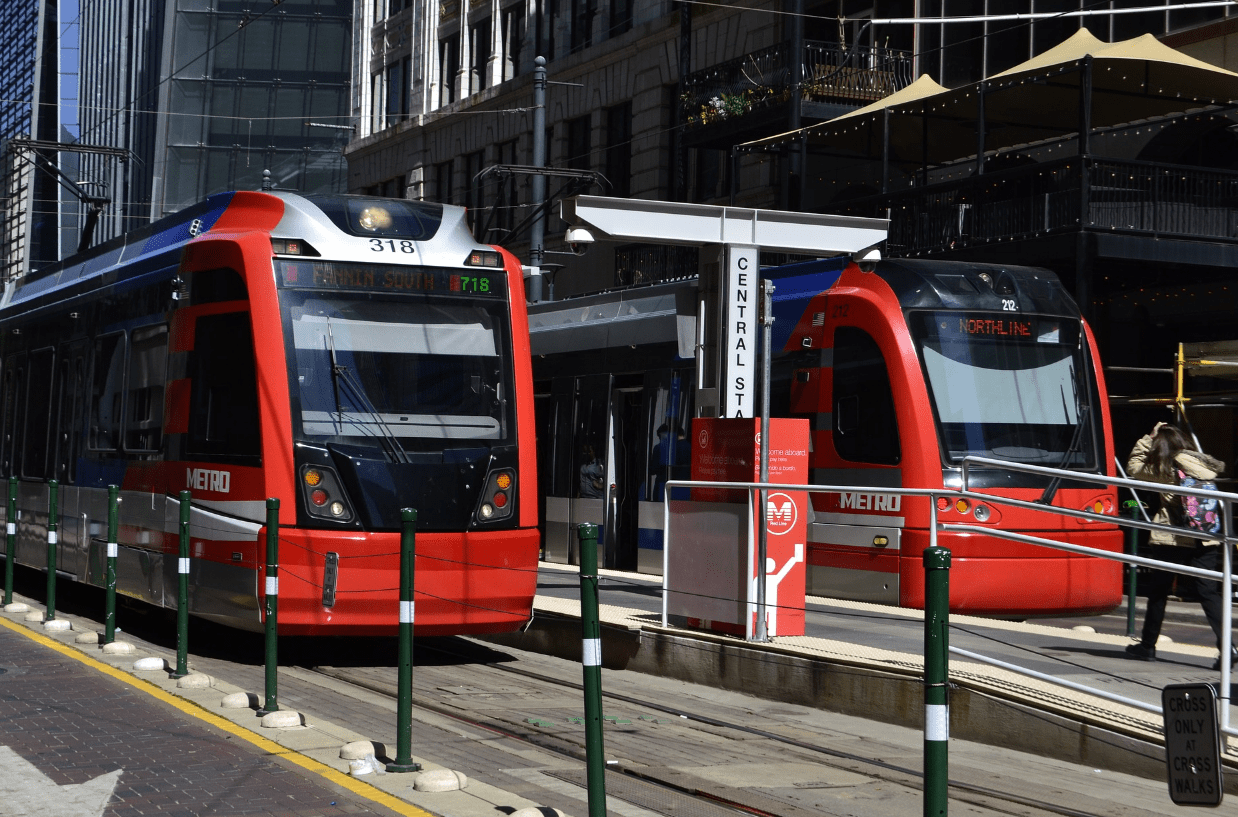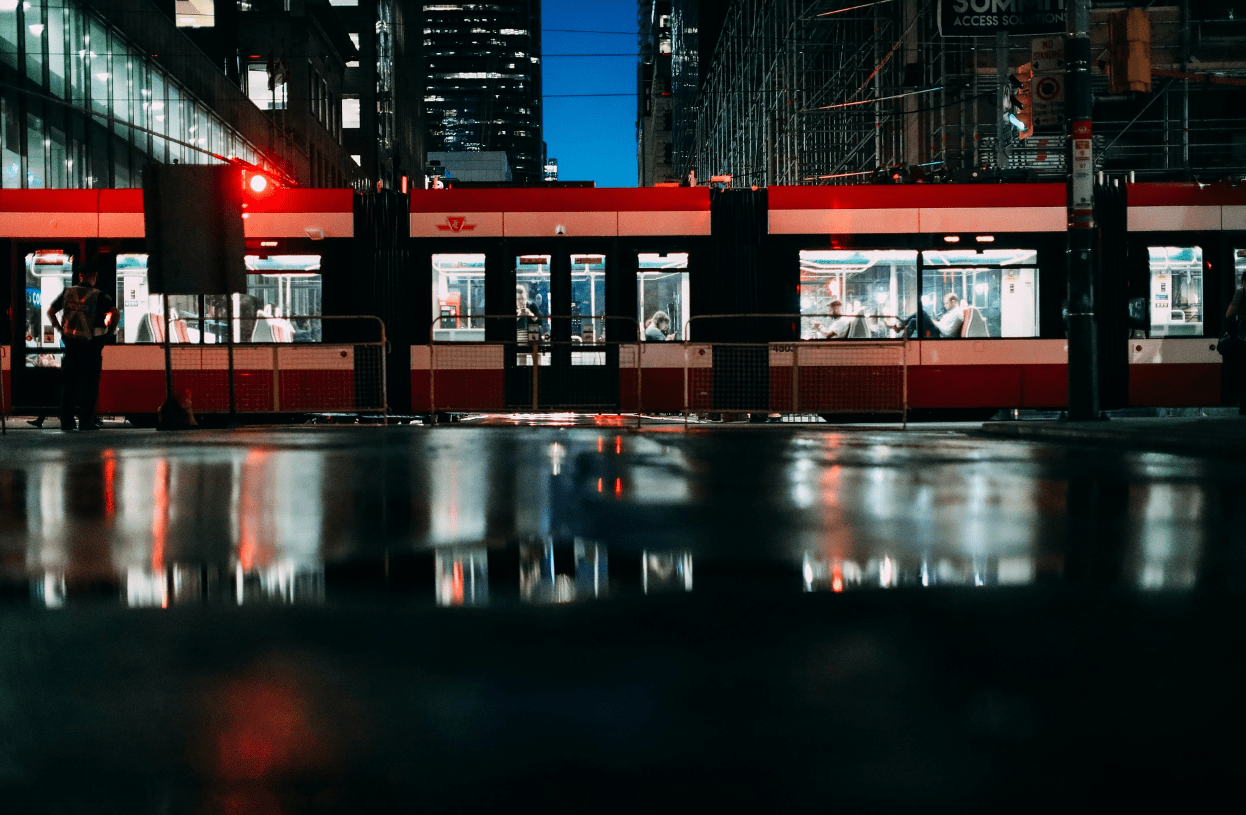Nobody likes commuting – however with many of us now working at home, are we realising that the ride to and from the workplace served a beneficial psychological purpose?
Like many New Yorkers, Meg Loughney confronted a annoying each day commute. Typically, it would take her greater than an hour to tour from her domestic in Astoria, Queens to her workplace at a administration consultancy on Wall Street. It concerned three modes of transport: a bus to drop off her toddler daughter at day-care, then a packed subway carriage into Manhattan’s Financial District and in the end a brisk 15-minute walk to the office.
“It simply wasn’t fun,” she says. “It used to be awful.”
That used to be earlier than the Covid-19 stay-at-home order stopped anyone in their tracks. Now, after numerous weeks of working from home, Loughney admits that she certainly misses her commute. “It’s pitifully unhappy to say that, however it’s true,” she says. “Working from domestic – for these of us lucky ample to be nevertheless working – has delivered an delivered layer of stress. [The] want to usually be on, to constantly be working. You’re working thru dinner; you’re working after dinner; you’re working after you put your youngsters down to bed. There is no separation, and the shuttle supplied that intellectual separation.”
The journey to work can be extra traumatic than the authentic job, or a go to to the dentist
On its face, Loughney’s view may also appear surprising. Numerous research and surveys have determined that commuting is people’s least favored activity, inclusive of one by means of Ford Motor Company, which published the experience to work to be extra disturbing than the real job (or a go to to the dentist). And these who are presently visiting to worksites may additionally properly be dreading their each day trip and the fitness hazard that it brings. Yet, for these of us at domestic with our commutes on pause, are we realising that these bookends to our working day can also have served an vital reason after all?
Transitional buffer
“You can’t disentangle domestic and work anymore, and that’s now not continually easy,” says Jon Jachimowicz, an assistant professor in the Organizational Behavior Unit at Harvard Business School. A new study, co-authored by using Jachimowicz, examines the characteristic of the shuttle as a psychological threshold between domestic and work.
According to the study, the day by day trip presents an chance for human beings to have interaction in “role-clarifying prospection”, that means it offers them time and area to suppose about the upcoming work role. “Through role-clarifying prospection, personnel mentally shift their interest from what they are experiencing in the current - ideas pertaining to their commute, or ideas unrelated to their previous or future position - to what they will be experiencing when they arrive at work, namely, ideas pertaining to their workday,” the authors write.
In different words, the shuttle acts as a transitional buffer. “It’s no longer as convenient as switching from one function to the next. When you go into work and you’re nonetheless in your domestic role, you frequently have combat between the home-related identities and your work-related identities,” says Jachimowicz. When this takes place the needs in one area can also “deplete intellectual sources (such as time, power and mood) and minimize accomplishments in the other”.
Jachimowicz and his colleagues derived these conclusions from three subject research the place personnel had been given questions about the size of their commute, the degree of their job satisfaction, and whether or not or no longer they notion about work on route. Those personnel that engaged in some diploma of prospection have been determined to have increased job pride and increased work-related outcomes.
How boredom solves problems
The thinking of prospection may additionally run even deeper than simply questioning about our working day. Perhaps the go back and forth additionally provides an possibility to faucet into deeper tiers of creativity, even as we’re jostled alongside in a jam-packed bus or train.
Around the globe, the common commuting time for working guys and ladies is 38 minutes every way
Around the globe, the common commuting time for working guys and ladies is 38 minutes every way. That provides up to a lot of “in-between” time, which affords many a danger to read, hear to a podcast, audiobooks or hotel to taking part in Candy Crush or Scrabble. However, in accordance to Manoush Zomorodi, the writer of Bored and Brilliant: How Spacing Out Can Unlock Your Most Productive and Creative Self, we shouldn’t be averse to boredom.
Zomorodi references lookup by means of neuroscientists displaying that boredom can set off a community in the talent that is related with idea wandering, which can yield authentic thoughts, and additionally hassle solving. “That trip offers you time to think, ‘Oh, I desire I hadn’t stated that in the meeting. You recognize what, we have any other assembly tomorrow, possibly I’ll say that.’ So, you method what happened, and parent out how to make it better,” she says.
Reflection is mainly beneficial on the nighttime commute, after the working day is done. And then of course, the thought casts forwards to sketch the evening, when you come up with a accurate way of getting ready these leftovers, or a way to slip greens into your fussy child’s meal. “That’s the kind of time touring that occurs throughout boredom and all through thinking wandering,” says Zomorodi. “I assume that in-between time is very vital.”
The stunning matters we miss
That time is prized by way of humans who travel by using car, too. Until the virus averted her journey, Californian Jennifer Wittert would tour from her lakeside neighborhood in Calabasas to her workplace in West Los Angeles the place she works as a medical psychologist. That commute, taking seventy five minutes every way, should be stressful, particularly with the heavy visitors on the Interstate 405.
And but Wittert misses the sanctuary of her auto in the morning the place she would have her breakfast and hear to both audiobooks or music. Bluetooth science in the automobile additionally allowed her to capture up on calls and messages, which helped her to manipulate her time extra effectively. But with the travel suspended, Wittert feels like she is “losing that inner locus of control”.
It was once such a steady and every day section of your being, your functioning, that’s simply long gone – Meg Loughney
Still, Wittert has come up with sensible options in her new working-from-home reality. She has tried to hold a time table for herself, maintaining her sufferers on track. Small day by day rituals help, she says, which encompass putting her intentions for the day – a structure of prospection – and later she rewards herself by means of ending on time, a technique of self-evaluation that she says is drawn from Applied Behaviour Analysis.
For New Yorker Loughney, the disappearance of her every day trip has additionally disadvantaged her of some thing she hadn’t in the past acknowledged. Having to navigate the New York City hordes at rush hour, for over a decade, made her sense resilient. “You don’t stay in this town for 15 years except you can deal with, or block out, something may appear bizarre or disruptive to you on public transportation,” she says. “And all of a sudden, that bit of you that receives up each day, fights thru the crowds and offers with it, that little bit of drama is gone.”
As described by means of psychological theory, resilience is a fine adaption in the face of adversity and related with coping skill. To all at once lose that feel of self feels jarring, Loughney admits. “It was once such a regular and every day phase of your being, your functioning, that’s simply gone.”
Replacing the commute
In the absence of their commutes, some individuals, like Wittert, are discovering methods to recreate these bookends to the day by using being aware of their intentions. Others use bodily cues. Jachimowicz finds it beneficial to put on work garments to commence his working day and trade when his day is done. The New York Times these days suggested on the return of cocktail hour as “a ritual to substitute the ones that had vanished from our lives”.
“I suppose we’re searching for habits, some of them more healthy than others, to change the go back and forth in some ways,” says Zomorodi.
But possibly the most outstanding ritual to have taken keep in New York is the nightly applause for critical workers. As humans take to their home windows and balconies for citywide clapping, it can sense each like a catharsis and additionally the second when the nighttime begins.
Note : This article was written during COVID-19.



























0 Comments
Please do not enter any spam links in the comment box.